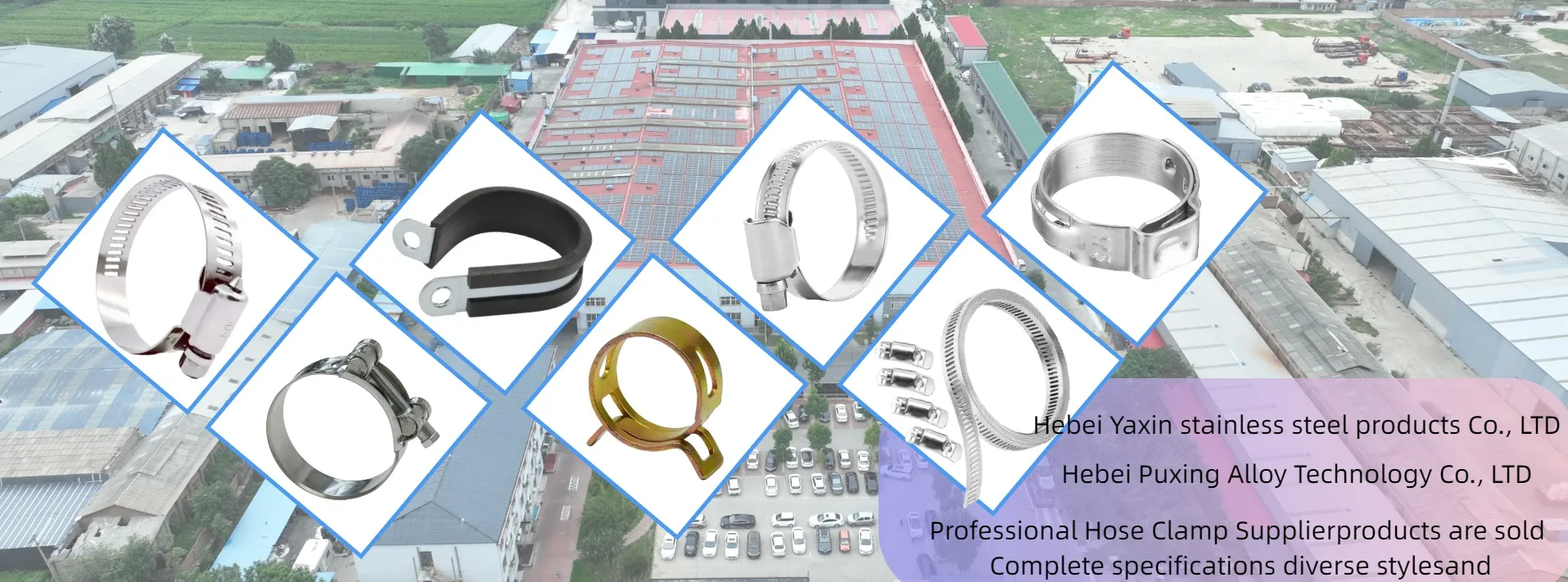- Phone:+86-17331948172 +86-0319-8862898
- E-mail: inquiry@puxingclamp.com
Aug . 10, 2025 02:40 Back to list
Durable Stainless Steel Hose Clip & Clamp Solutions
The Indispensable Role and Advanced Engineering of Stainless Steel Hose Clips in Industrial Applications
In the vast and intricate landscape of industrial fluid transfer, the integrity and reliability of connections are paramount. Every pipeline, every conduit, every system component, no matter how robust, is only as strong as its weakest link. Within this critical nexus, the stainless steel hose clip emerges not merely as a fastening device, but as a cornerstone of operational safety, efficiency, and longevity. These seemingly simple components, often referred to interchangeably as stainless steel hose clamp or stainless steel hose clamps, play a crucial role in securing hoses onto fittings, preventing leaks, maintaining pressure, and ensuring uninterrupted fluid or gas flow across diverse sectors. From the high-pressure environments of petrochemical refineries to the meticulous sanitation demands of food processing plants, and from the rigorous vibration of heavy machinery to the precise control required in automotive systems, the dependable performance of these clamps is non-negotiable. Their design and material composition are engineered to withstand extreme conditions, including corrosive agents, high temperatures, intense pressures, and mechanical stress, thereby safeguarding expensive equipment, valuable resources, and, most importantly, human lives. The selection of the appropriate stainless steel alloy, such as the ubiquitous AISI 304 or the more corrosion-resistant AISI 316, is a critical engineering decision, directly influencing the product's lifespan and its ability to maintain its structural and functional integrity in specific operational contexts. Furthermore, the advancements in manufacturing processes, including precision stamping, automated welding, and meticulous surface treatment, have transformed the stainless steel hose clip from a basic fastener into a high-performance engineered solution. This evolution reflects an industry-wide commitment to enhancing system reliability and reducing maintenance overheads. The robust construction and inherent properties of stainless steel, such as its exceptional tensile strength and superior resistance to oxidation and chemical degradation, position these clamps as the preferred choice over conventional materials in demanding industrial scenarios where failure is not an option. The seamless integration of these clips into complex fluid management systems underscores their fundamental importance, providing a secure, leak-proof connection that is essential for both operational efficacy and regulatory compliance across a multitude of applications. This foundational understanding sets the stage for a deeper exploration into their manufacturing, technical specifications, and widespread industrial adoption, highlighting their indispensable contribution to modern engineering.
Navigating Industry Trends and Market Dynamics in Stainless Steel Hose Clamp Technology
The global market for hose clamps, particularly those crafted from stainless steel, is characterized by dynamic trends driven by technological advancements, evolving regulatory landscapes, and an increasing demand for sustainable and high-performance solutions across various industrial sectors. A significant trend is the relentless pursuit of enhanced corrosion resistance and durability, pushing manufacturers to innovate with advanced stainless steel alloys, such as marine-grade 316L, and sophisticated surface treatments like passivation or electropolishing. This focus is particularly pronounced in industries exposed to harsh environments, including offshore oil and gas, chemical processing, and wastewater treatment, where the longevity of components directly translates into reduced operational costs and improved safety records. Another prominent trend involves the miniaturization and optimization of designs for applications requiring compact, yet robust, fastening solutions, such as in specialized electronics cooling systems or complex robotic assemblies where space is at a premium. Concurrently, there is a growing emphasis on ease of installation and removal, with innovations like quick-release mechanisms or pre-assembled clamps gaining traction, aiming to minimize downtime during maintenance or system modifications. The advent of smart manufacturing and Industry 4.0 principles is also beginning to influence the production of stainless steel hose clamps, leading to greater automation, predictive quality control, and the potential for customized, on-demand fabrication processes, which can significantly reduce lead times and material waste. Environmental sustainability is another critical driver, prompting a shift towards more recyclable materials and manufacturing processes that minimize energy consumption and waste generation. Furthermore, the market is experiencing a rising demand for specialized clamps designed for unique applications, such as those that require specific torque specifications for highly sensitive equipment or clamps with specialized liners to protect delicate hose materials from damage. The expansion of emerging economies and their escalating industrialization efforts, particularly in sectors like automotive, construction, and infrastructure development, is fueling a substantial demand for various types of hose clamps, including common sizes like the 2 inch hose clamp and larger variants such as the 12 inch hose clamp, and even more specialized solutions like the band roll hose clamp which offers unparalleled flexibility in sizing. Regulatory compliance, particularly with international standards such as ISO 9001 for quality management and ASTM specifications for material properties, continues to be a non-negotiable requirement, ensuring product reliability and market access. This multifaceted market evolution necessitates that manufacturers not only keep pace with technological advancements but also anticipate future industry needs, ensuring their products, particularly high-quality stainless steel hose clip solutions, remain at the forefront of performance and innovation to meet the increasingly stringent demands of modern industrial applications.
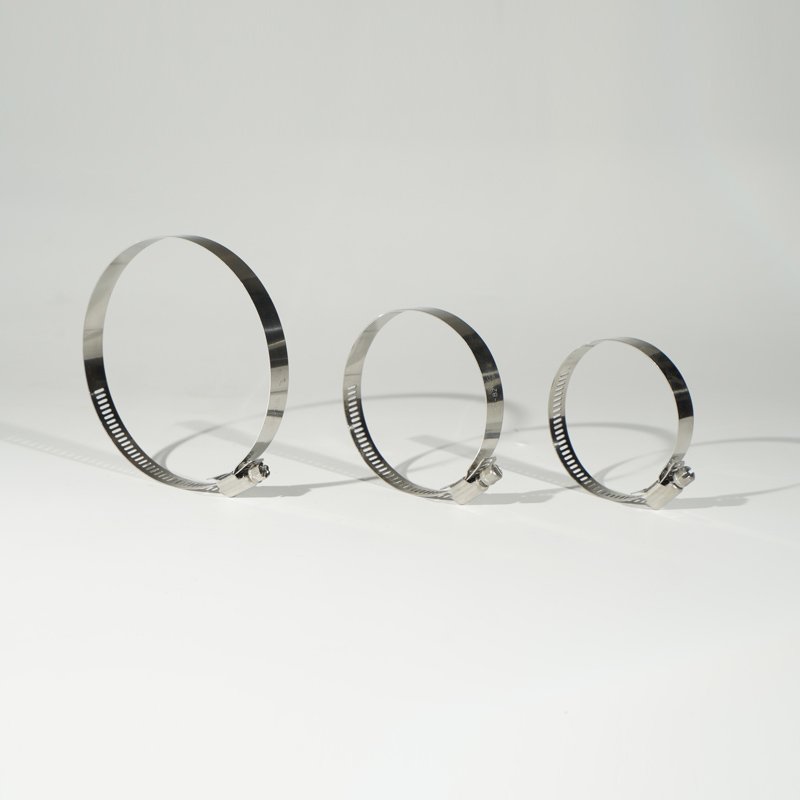
Fig 1: Precision manufacturing for optimal stainless steel hose clamps performance.
The Meticulous Craft of Manufacturing a High-Performance Stainless Steel Hose Clip
The production of a high-quality stainless steel hose clip is a multi-stage, precision-driven process that marries advanced metallurgy with sophisticated engineering techniques, ensuring each unit meets stringent performance and durability standards. The journey begins with the meticulous selection of raw materials, primarily high-grade stainless steel coils, typically AISI 304 (UNS S30400) or AISI 316 (UNS S31600), known for their superior corrosion resistance and mechanical properties. AISI 304 offers excellent resistance to a wide range of atmospheric and chemical exposures, making it suitable for general industrial applications, while AISI 316, with its added molybdenum content, provides enhanced resistance to pitting and crevice corrosion, particularly in chloride-rich environments like marine or chemical processing settings. Once the material is chosen, the manufacturing process generally involves several key steps. Firstly, the stainless steel coils are fed into high-precision stamping machines, where the band, housing, and screw components are accurately cut and formed. This stamping process is crucial for achieving the exact dimensions and tolerances required for optimal fit and function. Following stamping, specialized machinery performs bending and shaping operations to create the characteristic profiles of the band and housing, ensuring a secure grip and smooth surface to prevent hose damage. The screw component, often featuring a slotted or hex head design for easy installation, is typically cold-formed or machined from stainless steel wire, guaranteeing high tensile strength and resistance to stripping under torque. Welding, particularly spot welding or laser welding, is then employed to securely attach the housing to the band, creating a robust, integral structure capable of withstanding significant radial force. For screw-type hose clamps, the screw thread and band perforations (or slots) must be perfectly aligned and precisely manufactured to allow for smooth engagement and consistent clamping force distribution. Beyond the primary forming processes, critical finishing treatments are applied. Passivation, a chemical process, is widely used to remove free iron contaminants from the surface of the stainless steel, thereby enhancing its inherent corrosion resistance by forming a thin, protective passive layer. Some manufacturers may also employ electropolishing for an even smoother, brighter finish and improved corrosion performance. Throughout the entire manufacturing chain, rigorous quality control measures are implemented. This includes in-process inspections for dimensional accuracy, material composition verification using X-ray fluorescence (XRF) or spectrographic analysis, and non-destructive testing (NDT) methods to detect any internal flaws. Final product testing typically involves torque testing to verify the clamping force and screw integrity, destructive pull-off tests to ascertain tensile strength, and salt spray corrosion tests (e.g., ASTM B117) to evaluate long-term corrosion resistance. Adherence to international standards such as ISO 9001 for quality management systems, and product-specific standards like SAE J1508 for worm drive hose clamps or DIN 3017 for European standard clamps, is paramount. These standards define material specifications, performance criteria, and testing methodologies, ensuring that each stainless steel hose clamp manufactured meets globally recognized benchmarks for quality and reliability. The service life of a well-engineered stainless steel hose clip, when selected appropriately for its intended application and installed correctly, can extend for decades, minimizing the need for frequent replacements and reducing overall maintenance costs. This longevity, combined with superior performance in harsh operating conditions, underscores the strategic advantage of investing in meticulously crafted stainless steel fastening solutions for critical industrial infrastructure across sectors such as petrochemicals, metallurgy, water supply and drainage systems, and many more, where their anti-corrosion and pressure-holding capabilities contribute significantly to energy efficiency and operational safety.
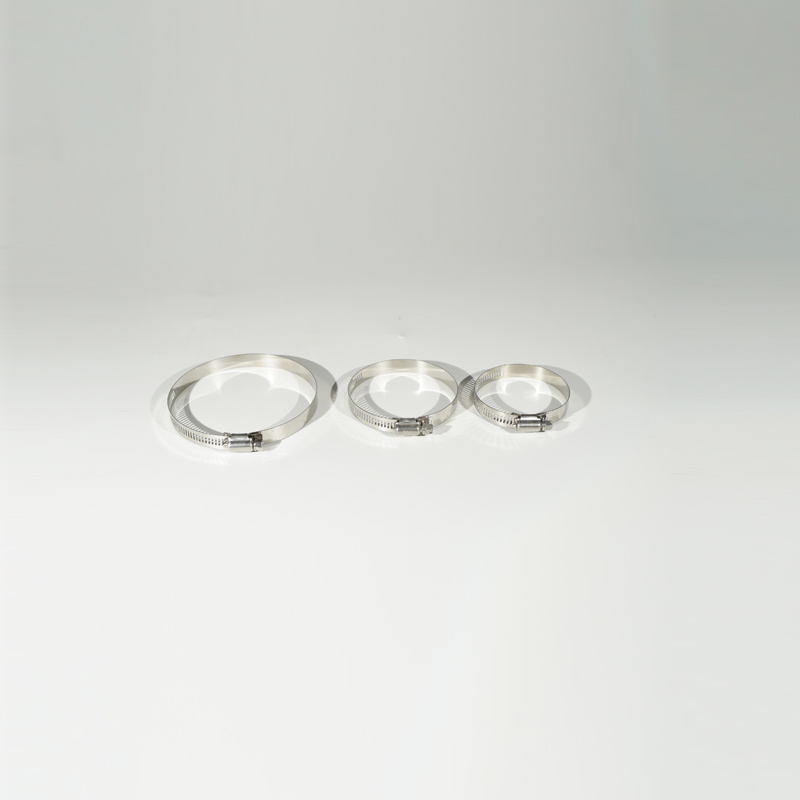
Fig 2: Overview of the intricate manufacturing process for stainless steel hose clips.
Essential Technical Parameters and Specifications for Stainless Steel Hose Clamps
Understanding the technical parameters and specifications of stainless steel hose clamps is fundamental for engineers and procurement specialists to ensure optimal performance, compatibility, and safety in any fluid transfer system. These parameters define the mechanical properties, dimensional characteristics, and operational limits of the clamp, dictating its suitability for specific applications. Key among these is the material grade, with AISI 304 and AISI 316 stainless steel being the industry benchmarks. AISI 304 offers excellent corrosion resistance in ambient conditions and good strength, making it ideal for general-purpose applications. AISI 316, enriched with molybdenum, provides superior resistance to chlorides and extreme corrosive environments, often preferred in marine, chemical, and pharmaceutical settings. The clamp's size range, typically measured by the effective clamping diameter, is critical; common sizes like a 2 inch hose clamp are widely used, but the spectrum extends to much smaller and larger dimensions, including specialized 12 inch hose clamp variants designed for heavy-duty industrial pipes. Band width and thickness are also vital, influencing the contact area and ultimately the clamping force distribution. Wider and thicker bands generally provide greater radial force and durability, particularly under high-pressure or high-vibration conditions. The maximum applied torque, specified in Newton-meters (Nm) or inch-pounds (in-lbs), indicates the maximum tightening force the screw mechanism can withstand without stripping or deforming, directly correlating to the potential sealing pressure the clamp can achieve. Burst pressure ratings, though often dependent on the hose material and fitting design, are a critical indicator of the assembly's integrity, with high-quality stainless steel hose clamps contributing significantly to the overall burst resistance of a system. Operating temperature ranges are equally important, as stainless steel maintains its mechanical properties across a wide thermal spectrum, typically from -60°C to +300°C (-76°F to +572°F), making it suitable for both cryogenic and high-temperature applications. Compliance with industry standards, such as SAE J1508 for worm-gear clamps, DIN 3017 for band clamps, or ISO 9001 for quality management, provides an assurance of consistent quality and performance. Furthermore, specialized features like rolled edges to prevent hose damage, bridge designs for enhanced sealing, or spring-loaded mechanisms for constant tension in fluctuating thermal environments, add to the functional advantages. When specifying a stainless steel hose clip, a comprehensive review of these parameters alongside the specific application requirements—including fluid type, pressure, temperature, vibration, and environmental corrosivity—is essential to select a product that not only fits dimensionally but also performs reliably over its intended lifespan, ensuring long-term operational integrity and minimizing the risk of costly failures or environmental hazards, thereby reinforcing the overall trustworthiness and expertise of the solution provider.
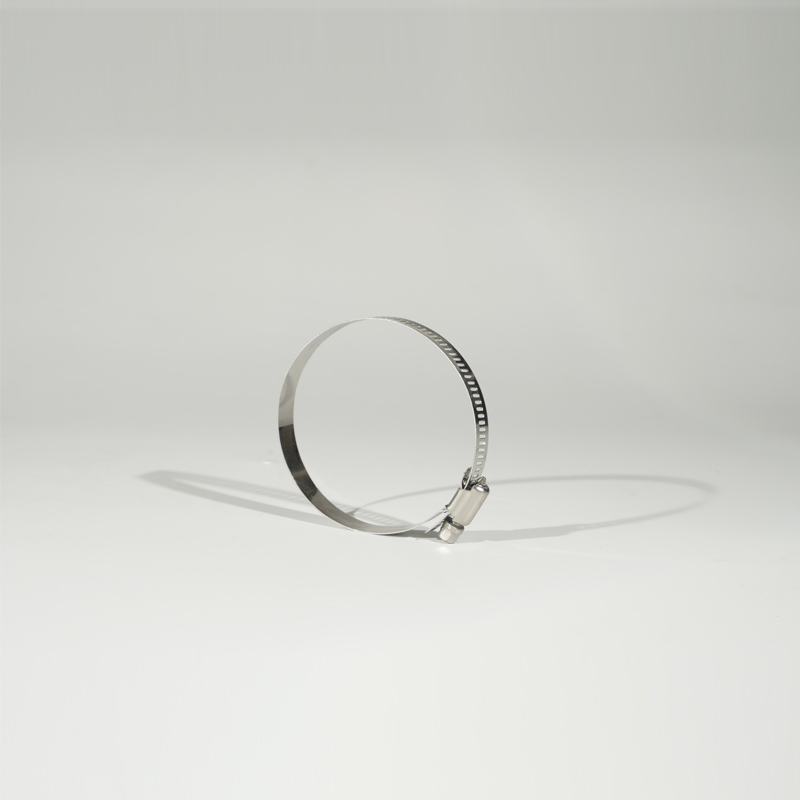
Fig 3: Illustrating the precision and robust design of a stainless steel hose clamp.
Key Specifications and Performance Data for Stainless Steel Hose Clamps
| Parameter | Typical Value / Range | Significance / Benefits |
|---|---|---|
| Material Grade | AISI 304, AISI 316 (316L) Stainless Steel | Superior corrosion resistance, high strength-to-weight ratio, non-magnetic (304), enhanced chloride resistance (316). Essential for longevity in harsh environments. |
| Band Width | 8mm to 20mm (e.g., 9mm, 12.7mm, 14.2mm, 19mm) | Influences clamping force distribution and contact area. Wider bands typically offer better sealing and hose protection. |
| Band Thickness | 0.6mm to 1.5mm (e.g., 0.8mm, 1.0mm) | Determines the structural rigidity and tensile strength of the clamp. Thicker bands resist deformation under high torque. |
| Clamping Diameter Range | 6mm to 300mm+ (e.g., 25-50mm for 2 inch hose clamp, 290-320mm for 12 inch hose clamp) | Specifies the range of hose outer diameters the clamp can effectively secure. Critical for proper fit and sealing. |
| Recommended Installation Torque | 4 Nm to 12 Nm (35-106 in-lbs) for standard clamps; up to 25 Nm for heavy-duty | Ensures adequate sealing force without over-tightening or damaging the clamp/hose. Prevents leaks and extends lifespan. |
| Operating Temperature Range | -60°C to +300°C (-76°F to +572°F) | Indicates the temperature extremes the clamp can withstand without material degradation or loss of clamping force. |
| Corrosion Resistance (Salt Spray Test) | Typically 200-1000 hours (ASTM B117) depending on grade and finish | Measures the clamp's ability to resist rust and degradation in saline environments, crucial for marine or outdoor applications. |
| Compliance Standards | SAE J1508, DIN 3017, ISO 9001 (Quality Management) | Ensures products meet recognized industry benchmarks for design, material, performance, and quality control. |
Diverse Application Scenarios and Unmatched Advantages of Stainless Steel Hose Clamps
The versatility and robust performance of stainless steel hose clamps make them indispensable across an extraordinarily wide array of industrial and commercial applications, bridging critical connections in almost every sector where fluid or gas transfer is required. Their ability to withstand challenging operational environments is a primary driver of their widespread adoption. In the petrochemical industry, for instance, these clamps are vital for securing hoses in pipelines transporting crude oil, refined fuels, and various chemicals, where resistance to corrosive hydrocarbons, extreme temperatures, and high pressures is paramount. Their non-sparking properties (when compared to certain other materials) and superior sealing capabilities minimize the risk of dangerous leaks, contributing directly to plant safety and environmental protection. Similarly, in the automotive sector, from engine cooling systems to fuel lines and exhaust connections, stainless steel hose clamps ensure leak-free performance under constant vibration, temperature fluctuations, and exposure to oils and lubricants. The marine industry relies heavily on the exceptional corrosion resistance of stainless steel hose clamps, particularly those made from AISI 316, to secure critical bilge hoses, exhaust lines, and fuel systems on boats and ships, safeguarding against saltwater degradation and ensuring operational integrity at sea. In food and beverage processing, the hygienic properties of stainless steel, coupled with its ease of cleaning, make it the material of choice for hose clamps used in transferring liquids and semi-solids, adhering to strict sanitary standards like FDA compliance for food contact materials. The medical and pharmaceutical industries also leverage these properties for equipment and tubing connections where sterility and non-reactivity with sensitive media are critical. Beyond these, the mining sector uses heavy-duty hose clamps for hydraulic lines and water pumps, enduring abrasive conditions and significant mechanical stress. The construction industry utilizes them for concrete pumping hoses, air lines, and water supply systems on job sites, often encountering rough handling and exposure to elements. In agriculture, they secure irrigation lines, spray hoses, and hydraulic connections on farm machinery, enduring outdoor exposure and chemical contact. Water supply and drainage systems, both municipal and industrial, benefit immensely from the anti-corrosion properties of stainless steel hose clamps, ensuring reliable connections in potable water lines, wastewater treatment plants, and irrigation networks, where long-term resistance to waterborne chemicals and biological agents is essential. The distinct technical advantages of using stainless steel hose clamps over other materials are multifaceted: their unparalleled corrosion resistance extends equipment lifespan and reduces maintenance frequency; their high tensile strength and robust design ensure secure connections even under high internal pressures and external vibrations, preventing costly and dangerous leaks; their wide operating temperature range allows for stable performance in extreme thermal conditions; and their inherent durability translates into a lower total cost of ownership by reducing the need for frequent replacements. These combined attributes contribute significantly to energy efficiency by preventing pressure losses, enhancing system reliability, and ultimately ensuring safer, more economical operations across the vast spectrum of industrial applications.
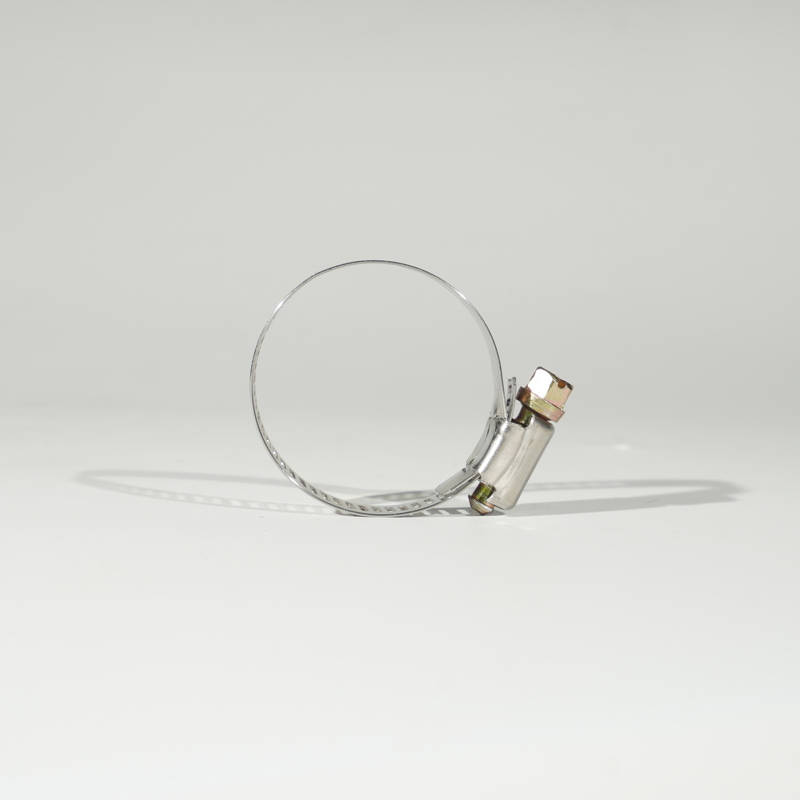
Fig 4: Versatility of stainless steel hose clamps in various industrial environments.
Choosing the Right Partner: Factors in Manufacturer Comparison and Customization Solutions
For B2B decision-makers, selecting a manufacturer for stainless steel hose clamps extends far beyond simply reviewing product specifications; it involves a comprehensive evaluation of a partner's capabilities, commitment to quality, and capacity for innovation and support. A crucial aspect of this comparison is the manufacturer's adherence to stringent quality control certifications, such as ISO 9001:2015, which signifies a robust quality management system encompassing design, development, production, installation, and servicing. Manufacturers with a long history of serving diverse industries, demonstrating years of experience and a strong portfolio of successful client engagements, often possess invaluable insights into various application challenges, from standard hose clamps needs like a 2 inch hose clamp to highly specialized requirements for a band roll hose clamp or a 12 inch hose clamp. Furthermore, assessing a manufacturer's material sourcing practices is vital; reputable suppliers will specify the exact grades of stainless steel used (e.g., AISI 304, AISI 316) and provide material test reports (MTRs) to verify composition and mechanical properties, ensuring the authenticity and performance of the raw material. The depth of their technical expertise, reflected in their engineering capabilities for product design, prototyping, and testing, is another key differentiator. Leading manufacturers frequently invest in advanced simulation software for performance prediction and have in-house testing facilities for torque, pull-off, and salt spray corrosion tests, aligning with global standards like ASTM B117 to validate product resilience. Beyond standard offerings, the ability to provide tailored customization solutions is increasingly important for industries with unique or highly specialized requirements. This might include custom sizes beyond the conventional ranges, specific band widths or thicknesses, unique screw drive types, specialized surface finishes (e.g., black oxide coating for reduced glare, PVC coating for vibration dampening), or even integrating proprietary marking or branding for traceability. A capable manufacturer should have a well-defined process for handling custom orders, from initial consultation and design conceptualization to prototype development, rigorous testing, and scaled production. This responsiveness to bespoke needs distinguishes a truly client-centric partner. Their commitment to after-sales support, including technical assistance, troubleshooting, and clear warranty policies, further underscores their reliability. Transparency in delivery schedules, coupled with efficient logistics, is also critical for maintaining project timelines and operational continuity for B2B clients. Companies demonstrating a proactive approach to research and development, constantly striving to improve product performance, reduce environmental impact, or introduce innovative designs (such as constant tension clamps for dynamic thermal cycles), position themselves as long-term strategic partners rather than mere suppliers. Engaging with a manufacturer that not only understands the intricacies of stainless steel hose clip technology but also aligns with your business's values and long-term strategic goals is paramount for achieving sustained operational excellence and competitive advantage.
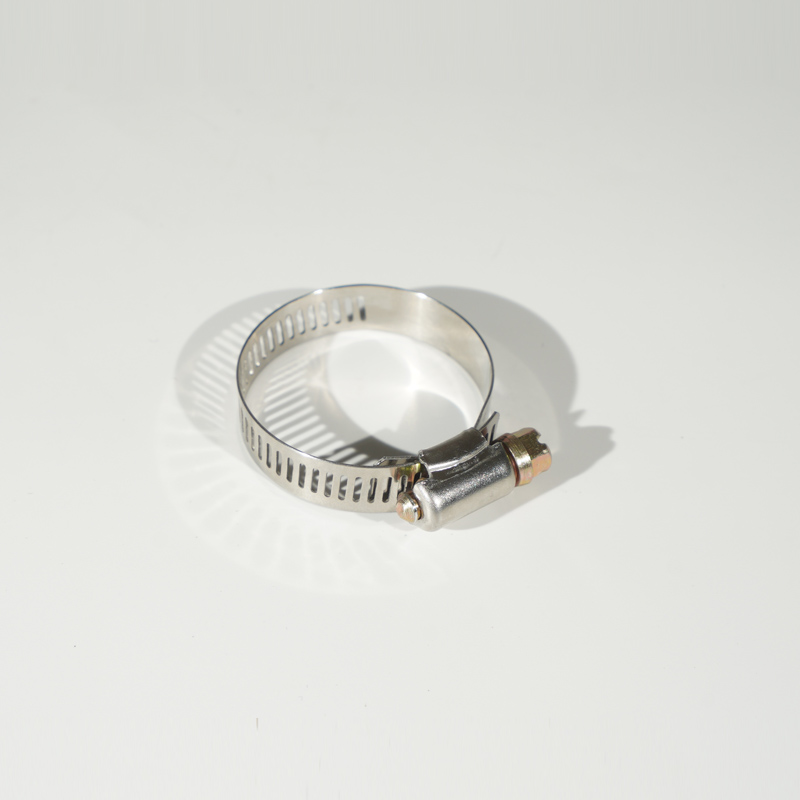
Fig 5: Showcasing the breadth of customization options for stainless steel hose clamps.
Real-World Impact: Application Case Studies and Trustworthy Service Commitments
The true testament to the quality and efficacy of stainless steel hose clamps lies in their performance in demanding, real-world applications, showcasing not only their technical superiority but also the reliability of the supporting manufacturer. Consider a critical case study in the offshore drilling industry, where a major oil and gas company faced persistent issues with hose integrity on hydraulic power units due to severe saltwater corrosion and constant vibration. Traditional carbon steel clamps were failing within months, leading to costly downtime and safety hazards. By switching to high-grade AISI 316 stainless steel hose clamps from a certified manufacturer, specifically designed with rolled edges and a robust worm drive mechanism, the company reported a dramatic reduction in leaks and an estimated tenfold increase in clamp lifespan, leading to significant operational savings and enhanced safety records. This demonstrated experience highlights the crucial role of material science and precision engineering in overcoming extreme environmental challenges. Another compelling example comes from a large municipal wastewater treatment plant struggling with consistent leakage from their aeration basin lines due to the highly corrosive nature of the treated water and fluctuating temperatures. Implementing custom-designed, extra-wide band roll hose clamp made from AISI 304 stainless steel, featuring specialized liners to protect the hose, solved the recurring leakage problem entirely. The clamps maintained their integrity and sealing force despite continuous exposure to aggressive chemicals and biological agents, illustrating the authoritativeness of a solution tailored to specific industrial needs and the inherent trustworthiness of quality stainless steel products. Such successful applications underscore the value proposition of superior hose clamps: preventing expensive fluid losses, extending equipment life, minimizing maintenance, and ensuring environmental compliance. Beyond these tangible product benefits, the trustworthiness of a supplier is further cemented by their comprehensive service commitments. A dedicated Frequently Asked Questions (FAQ) module on their website or in their technical documentation provides immediate answers to common inquiries regarding installation, sizing, material compatibility, and maintenance, empowering users with self-service support. Transparent delivery cycle explanations, detailing lead times for standard products and estimated timelines for custom orders, ensure that clients can plan their projects effectively without unexpected delays. Furthermore, a clear and unequivocal warranty commitment, outlining the terms of product replacement or refund in case of manufacturing defects or premature failure under specified conditions, instills confidence in the product's quality and the manufacturer's accountability. Finally, robust customer support channels, including technical hotlines, online chat, and dedicated account managers, ensure that expert assistance is readily available for complex technical queries, troubleshooting, and post-sales service, reinforcing a long-term partnership approach. This holistic commitment to product excellence and customer satisfaction solidifies the reputation of a manufacturer as a reliable and authoritative source for all stainless steel hose clip requirements, building invaluable trust within the B2B landscape.

Fig 6: Demonstrating the enduring reliability of stainless steel hose clamps in operation.
Frequently Asked Questions (FAQ) about Stainless Steel Hose Clamps
Q1: What is the primary advantage of stainless steel hose clamps over other materials like galvanized steel?
The paramount advantage of stainless steel hose clamps lies in their superior corrosion resistance, particularly when compared to galvanized steel. While galvanized steel offers a zinc coating for corrosion protection, this layer can be compromised by scratches, abrasion, or exposure to harsh chemicals, leading to rust and eventual failure. Stainless steel, especially grades like AISI 304 and AISI 316, forms a passive chromium oxide layer on its surface, which self-repairs in the presence of oxygen, providing inherent and long-lasting protection against rust, oxidation, and a wide array of corrosive agents. This intrinsic property ensures a significantly longer service life, particularly in outdoor, marine, chemical, or high-humidity environments where galvanized clamps would quickly degrade, leading to potential leaks, system failures, and increased maintenance costs. Furthermore, stainless steel maintains its mechanical strength and integrity across a broader temperature range and under greater stress, making it a more reliable and durable solution for critical applications where security and longevity are non-negotiable. This difference in material science translates directly into enhanced operational safety, reduced downtime, and a lower total cost of ownership over the lifespan of the equipment.
Q2: How do I select the correct size of stainless steel hose clamp for my application?
Selecting the correct size of stainless steel hose clamp is critical for ensuring a secure, leak-proof connection and preventing damage to the hose or fitting. The primary measurement you need is the outer diameter (OD) of the hose once it is fully seated onto the fitting. It is not sufficient to measure the inner diameter of the hose or the outer diameter of the fitting independently, as the combination of the two determines the final OD at the clamping point. Once you have this measurement, you should choose a hose clamp whose clamping range encompasses this OD. For example, if your hose's OD on the fitting measures 2 inches (approximately 50.8mm), you would typically select a 2 inch hose clamp with a range that includes 50.8mm, perhaps a range like 38mm-57mm (1.5" - 2.25"). It is advisable to choose a clamp where your measured OD falls approximately in the middle of its specified clamping range. This allows for sufficient tightening without over-extending the clamp to its maximum capacity, which could lead to screw stripping or band deformation. Additionally, consider the type of hose (e.g., rigid, flexible), the pressure of the fluid, and any potential vibrations, as these factors might influence the need for a wider band or a more robust design to ensure optimal sealing. Always refer to the manufacturer's specifications and recommendations for precise sizing guidelines to guarantee maximum security and operational integrity for your fluid transfer systems.
Q3: What factors affect the lifespan and performance of a stainless steel hose clip?
The lifespan and performance of a stainless steel hose clip are influenced by a confluence of critical factors, ranging from intrinsic material properties to external environmental conditions and installation practices. Foremost is the quality and grade of stainless steel used; AISI 316 generally offers superior longevity in highly corrosive or chloride-rich environments compared to AISI 304. However, even within the same grade, variations in manufacturing processes—such as precision stamping, welding quality, and post-production treatments like passivation or electropolishing—significantly impact corrosion resistance and overall durability. Secondly, the operating environment plays a crucial role; exposure to aggressive chemicals, saltwater, extreme temperatures (both high and low), constant UV radiation, or abrasive particles can accelerate degradation. The nature of the fluid being conveyed through the hose also matters, as some fluids might react with the clamp material over time. Thirdly, proper installation is paramount. Incorrect torque application—either under-tightening leading to leaks or over-tightening causing thread stripping or band deformation—can severely compromise the clamp's integrity and reduce its effective lifespan. Using the correct tools and adhering to manufacturer-recommended torque specifications are essential. Fourthly, the design of the hose clamp itself, including the band width, thickness, screw mechanism, and features like rolled edges or spring-loading, affects its ability to maintain tension and resist stress over time. Regular inspection and maintenance, including visual checks for signs of corrosion, fatigue, or loosening, can help in early detection of issues, allowing for timely replacement and extending the overall system's reliability. By meticulously considering these factors, from material selection and manufacturing quality to installation and environmental conditions, one can significantly optimize the lifespan and ensure the reliable, long-term performance of stainless steel hose clamps in any industrial application.
Ensuring Supply Chain Reliability: Delivery, Warranty, and Customer Support
Beyond the intrinsic quality and technical specifications of stainless steel hose clamps, the reliability of the supply chain and the robustness of customer support mechanisms are equally critical factors for B2B clients in maintaining uninterrupted operations and mitigating risks. A truly reliable manufacturer understands that prompt and predictable delivery is as vital as product performance. They typically operate with streamlined logistics and efficient inventory management systems, allowing for clear communication regarding delivery cycles. For standard products, this might mean a guaranteed dispatch within 24-48 hours, while for custom-engineered solutions or bulk orders, a realistic and transparent lead time, often ranging from 2 to 6 weeks depending on complexity and volume, is provided and strictly adhered to. This proactive communication minimizes disruptions in client production schedules and ensures timely project completion. Moreover, a comprehensive warranty policy stands as a strong declaration of the manufacturer's confidence in their product quality. Reputable providers of stainless steel hose clamps generally offer a warranty that covers manufacturing defects and material failures for a specified period, typically ranging from 1 to 5 years under normal operating conditions. This commitment protects the client's investment and provides a clear recourse in the rare event of product issues, fostering an environment of trust and accountability. The warranty terms should clearly define what is covered, the conditions for claims, and the resolution process, whether it involves repair, replacement, or refund. Furthermore, exceptional customer support is the backbone of a strong B2B relationship. This extends beyond merely addressing complaints; it encompasses proactive technical assistance, pre-sales consultation to ensure correct product selection, and post-sales troubleshooting. Access to experienced technical personnel, who can provide in-depth advice on installation best practices, material compatibility, and performance optimization for various hose clamps types (e.g., 2 inch hose clamp, band roll hose clamp, 12 inch hose clamp), is invaluable. A dedicated account management system ensures that clients have a consistent point of contact who understands their specific needs and can facilitate rapid responses to inquiries. This holistic approach to service, from order placement through the entire product lifecycle, ensures that businesses are not just purchasing a component but gaining a reliable partner committed to their operational success and long-term satisfaction.
Conclusion: The Enduring Value of Precision-Engineered Stainless Steel Hose Clips
In summation, the journey through the intricate world of stainless steel hose clips reveals them to be far more than simple fasteners; they are precision-engineered components, vital for the integrity, safety, and efficiency of fluid transfer systems across virtually every industrial sector. From the initial selection of high-grade stainless steel alloys like AISI 304 or AISI 316, through sophisticated manufacturing processes encompassing stamping, welding, and meticulous finishing treatments such as passivation, every stage is geared towards producing a product that excels in durability, corrosion resistance, and clamping force. We have explored the dynamic industry trends driving innovation, focusing on enhanced material performance, design optimization, and sustainable practices. The detailed examination of technical parameters—including material grade, band width, clamping diameter, torque specifications, and operating temperature ranges—underscores the scientific rigor involved in their design and selection. Their pervasive application across petrochemical, automotive, marine, food processing, and municipal infrastructure sectors, among others, highlights their unparalleled versatility and the critical advantages they offer, such as preventing costly leaks, extending equipment lifespan, and ensuring operational safety. The importance of selecting a reputable manufacturer, characterized by stringent quality certifications, deep technical expertise, and a robust capacity for providing custom solutions, cannot be overstated. Finally, the emphasis on trustworthy service commitments, including transparent delivery cycles, comprehensive warranty policies, and responsive customer support, completes the picture of a holistic partnership approach. As industries continue to evolve, demanding increasingly higher standards of performance and reliability, the role of the stainless steel hose clamp will only grow in significance. Investing in high-quality, meticulously engineered stainless steel hose clamps is not merely a procurement decision but a strategic imperative that unpins the long-term operational excellence, safety, and economic viability of modern industrial enterprises. The commitment to engineering excellence in every stainless steel hose clip ensures that these unassuming components will continue to secure critical connections, facilitate seamless operations, and contribute significantly to industrial progress for decades to come, embodying reliability in every tight seal they create.
References and Further Reading:
- ASTM International. (n.d.). ASTM B117: Standard Practice for Operating Salt Spray (Fog) Apparatus. (Accessed via Official ASTM Website)
- SAE International. (2009). SAE J1508: Hose Clamps. (Accessed via Official SAE Website)
- International Organization for Standardization. (2015). ISO 9001: Quality management systems — Requirements. (Accessed via Official ISO Website)
- Stainless Steel Industry of North America. (n.d.). Stainless Steel Handbook. (Accessed via SSINA Website)
-
Large Stainless Steel Adjustable Hose Clamp - Hebei Pux Alloy Technology Co., Ltd|Corrosion Resistance&Adjustable Design
NewsAug.10,2025
-
Large Stainless Steel Adjustable American Type Hose Clamp - Hebei Pux Alloy Technology | Corrosion Resistant, Durable, Adjustable
NewsAug.10,2025
-
Large Stainless Steel Adjustable American Type Hose Clamp - Hebei Pux Alloy Technology Co., Ltd|Corrosion Resistance, Industrial Applications, NIST Standards
NewsAug.10,2025
-
Durable Stainless Steel Hose Clip & Clamp Solutions
NewsAug.10,2025
-
Large Stainless Steel Adjustable American Type Hose Clamp - Hebei Pux Alloy Technology Co., Ltd|Corrosion Resistance&Adjustable Design
NewsAug.09,2025
-
Large Stainless Steel Adjustable Hose Clamp - Hebei Pux Alloy Technology Co., Ltd. | Corrosion Resistance, High Torque
NewsAug.09,2025

